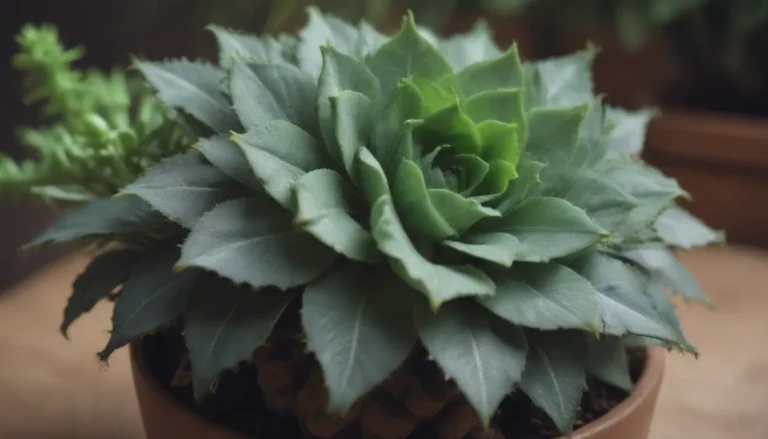The Ultimate Guide to Transplanting Roses

Roses are a beloved and beautiful addition to any garden, known for their fragrant blooms and colorful petals. Whether you’re looking to bring cut flowers indoors or simply want to enhance your landscape, a rose bush can be a stunning focal point. While some may shy away from growing roses due to their perceived difficulty, the truth is that there are many types of roses that are easy to grow for gardeners of all levels.
If your rose bush is struggling to thrive in its current location, it may be time to consider transplanting it to a more suitable spot. In this comprehensive guide, we’ll cover everything you need to know about transplanting roses, including why you should consider transplanting, the best time to do so, and how to properly move your rose bush without causing damage.
Why Transplant Roses
Roses, like all plants, require specific conditions to thrive. If your rose bush is not getting enough sunlight, has poor drainage, or is overcrowded, it may be time to consider transplanting it to a new location. Here are some common reasons why you might need to transplant your roses:
- Inadequate sunlight: Roses need plenty of sunlight to grow and bloom. If your rose bush is planted in a spot with too much shade, it may not be getting the light it needs to thrive.
- Poor drainage: Roses require well-draining soil to prevent root rot and other issues. If your rose bush is in a low spot or an area with poor drainage, transplanting it to a location with better soil conditions can help.
- Overcrowding: Failing to give your rose bush enough space to grow can lead to a variety of problems, including poor air circulation and the spread of disease. Transplanting your roses to a location with more room can help promote healthy growth.
- Safety concerns: If your rose bush is planted too close to walkways or high traffic areas, the thorns can become a painful nuisance. Transplanting your roses to a more suitable spot can help prevent accidents.
Best Time to Transplant Roses
Transplanting roses is not something that should be done on a whim. To ensure the success of your transplant, it’s important to choose the right time of year to move your rose bush. Here are some factors to consider when determining the best time to transplant your roses:
- Dormancy: Choose a time when your rose bush is dormant and not actively growing. The specific timing will vary depending on your climate and growing zone.
- Moderate temperatures: Avoid transplanting your roses during extreme weather conditions. Both freezing temperatures and hot weather can cause stress and shock to the plant.
- Moisture: Opt for a cloudy, overcast day when moisture levels are higher in the air. This will help reduce stress on the plant during the transplant.
In general, the best time to transplant roses in northern hardiness zones is in early spring, when most roses are dormant. For those in southern hardiness zones, transplanting can be done in spring or fall when temperatures are moderate and there are more cloudy days to help with moisture.
How to Transplant Rose Bushes
Transplanting a rose bush may seem like a daunting task, but with the right tools and techniques, it can be a relatively straightforward process. Here’s a step-by-step guide on how to properly transplant your roses:
-
Prune the bush: Before transplanting your rose bush, it’s important to prune it to make it more compact. This not only improves the overall appearance of the plant but also helps to balance the plant by reducing the above-ground growth.
-
Prepare the new planting hole: Mix in some bone meal and compost into the soil of the new planting hole to provide nutrients for your rose bush. Make sure to position the graft union slightly above or below the soil line, as this can be a weak spot for the plant.
-
Dig up the rose bush: Carefully dig up the rose bush, making sure to remove as much of the root ball as possible. Try to disturb the roots as little as possible to minimize transplant shock.
-
Replant the rose: Place the rose bush in the new planting hole, ensuring that the graft union is at the correct level. Fill in the hole with soil, gently tamping it down as you go. Water the plant thoroughly to help settle the soil.
-
Monitor and maintain: Keep an eye on your transplanted rose bush and ensure that the soil stays moist. Once you start to see new growth, you can continue with regular maintenance, such as pruning and fertilizing.
Additional Tips for Successful Transplanting
- Wear thick gloves: Protect your hands from thorns by wearing gloves throughout the transplanting process.
- Add mulch: Mulch around the base of your rose bush to help retain moisture, regulate soil temperature, and suppress weeds.
- Check for pests and diseases: Inspect your rose bush regularly for any signs of pests or diseases, especially after transplanting.
- Patience is key: Transplanting can be stressful for a plant, so be patient and give your rose bush time to adjust to its new location.
By following these steps and tips, you can successfully transplant your roses to a new location and enjoy healthy, vibrant blooms for years to come.
In conclusion, transplanting roses may seem like a daunting task, but with the right knowledge and preparation, you can ensure the success of your transplant. By considering factors such as sunlight, drainage, and plant size, choosing the best time of year, and following proper transplanting techniques, you can help your roses thrive in their new location. Remember to monitor your rose bush closely after transplanting and provide the care it needs to settle in and flourish. With a little effort and patience, you can enjoy beautiful roses in your garden for years to come.





